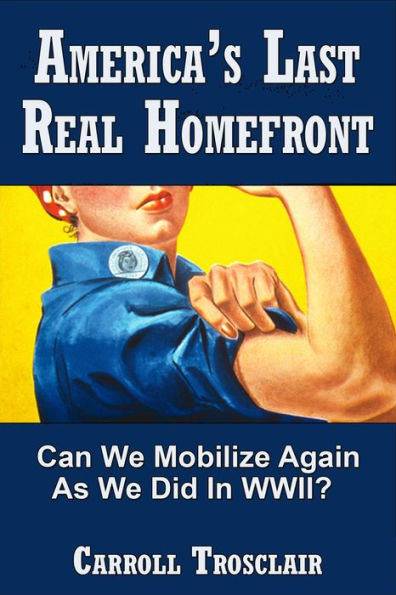The leadup to America's entry into WWII was a clash between two national heroes: President Franklin D. Roosevelt and Aviator/Isolationist Charles Lindbergh. Their harsh debate was finally silenced by Japan's attack on Pearl Harbor. The author, who experienced the war as a teenager, recalls the nation's overnight coming together, the Fireside Chats and how the American people produced the greatest arsenal in history through sheer determination. often-strained teamwork and heavy personal sacrifices. While hundreds of thousands of their loved ones were being killed or wounded overseas, some American men and women worked seven days a week. They learned to live with limited food, clothing and gasoline, accepted and paid higher taxes, salvaged everything from newspapers to kitchen grease, put up with a horribly complex rationing system and loaned their government billions of dollars in bonds and stamps. The author also lists 14 areas which may require special Home Front attention in case of another global war.
The leadup to America's entry into WWII was a clash between two national heroes: President Franklin D. Roosevelt and Aviator/Isolationist Charles Lindbergh. Their harsh debate was finally silenced by Japan's attack on Pearl Harbor. The author, who experienced the war as a teenager, recalls the nation's overnight coming together, the Fireside Chats and how the American people produced the greatest arsenal in history through sheer determination. often-strained teamwork and heavy personal sacrifices. While hundreds of thousands of their loved ones were being killed or wounded overseas, some American men and women worked seven days a week. They learned to live with limited food, clothing and gasoline, accepted and paid higher taxes, salvaged everything from newspapers to kitchen grease, put up with a horribly complex rationing system and loaned their government billions of dollars in bonds and stamps. The author also lists 14 areas which may require special Home Front attention in case of another global war.

America's Last Real Home Front

America's Last Real Home Front

Product Details
| BN ID: | 2940044690226 |
|---|---|
| Publisher: | Carroll Trosclair |
| Publication date: | 06/28/2012 |
| Sold by: | Smashwords |
| Format: | eBook |
| File size: | 241 KB |
